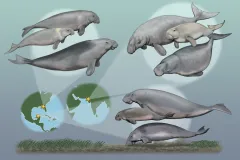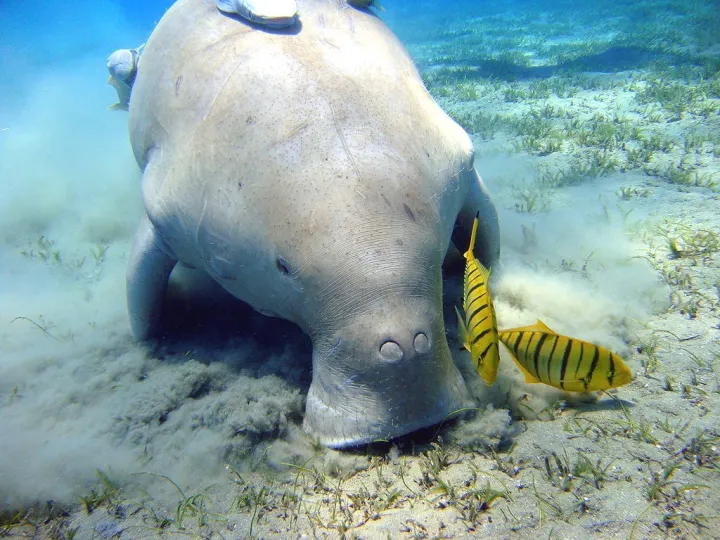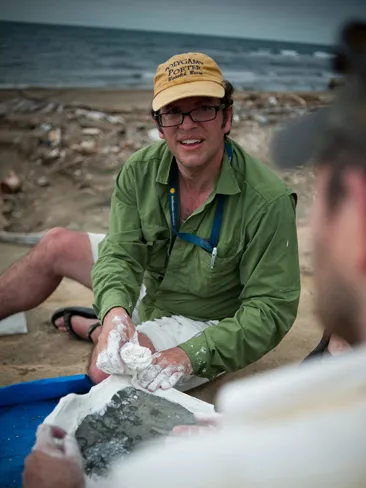The Discovery of Multispecies Communities of Seacows

Sirenians, or seacows, are a group of marine mammals that include manatees and dugongs. In the modern ocean, only one species of seacow is found in each world region, however, the fossil record tells a different story. According to the fossil record of these marine mammals, which dates back 50 million years ago, it was more common to find three, maybe more, different species living together at one time. This oddity hinted that seacows’ environment and food sources were different than what we see today.
Inspired by this finding, a group of paleontologists including Drs. Daryl Domning, Nick Pyenson and myself conducted research on extinct seacows from different ocean basins, in different geological times, to learn more about the paleoecology and evolution of these marine mammals.
Presently, there are only four species of living seacows. These include three species of manatees, which are found in different coastal waters of the Atlantic Ocean, and one species of dugong, found around coasts of the Indo-Pacific Ocean. All seacows are consumers of marine vegetation, and they generally concentrate on seagrasses (shown left). The geographic distribution of living seacows shows no overlap. However, the fossil record of seacows shows several instances where different species co-existed. My colleagues and I have called these instances that formed communities composed of three or more different species, multispecies communities. The discovery of these multispecies communities led our research team to investigate the following questions: 1) Were these species competing against each other for seagrass resources, or were they avoiding competition by niche partitioning?; and 2) Were seagrass beds structured differently in the past, or were they dominated by one seagrass species like we see today?
To answer these questions, we examined the fossil record of seacows, and narrowed our search for ironclad co-occurring species from specific locations in the world. Of the several possibilities found, we examined three localities, each from separate time periods, from India, Mexico and Florida, which all conclusively demonstrated an association of fossil species where more than one species of fossil dugongid co-existed. We then determined how these species interacted amongst themselves and examined their environment. Because time traveling to make biological observations is not possible, we relied on indirect methods to infer the ecology of these ancient seacows. Specifically, we searched for morphological characteristics in the fossils that could be used as indicators of dietary preferences in each individual species. Some of the results showed that certain characteristics of the skull could be used as ecomorphological proxies. By considering these ecomorphological traits and the body size estimates of these extinct seacows, we could understand how these multispecies communities partitioned their resources. In addition, we performed an analysis of the evolutionary relationships of all the seacows that we studied, and the resulting family tree - a phylogeny - showed us that these characteristics evolved independently.
These findings allowed our team to conclude that each iteration of multispecies communities evolved from unrelated species of extinct seacows; yet, each time, in different parts of the world, these species were able to separate themselves along very different resources. This finding implies that seagrass beds, these mammals' principle food source, were different then than they are now. For example, modern seagrass beds in the Caribbean region are usually dominated by turtle grass and other species of seagrass are found in the periphery or in disturbed patches of the same beds. Our study showed that some of the seacows in the multispecies communities were likely consumers of turtle grass or some other similar species of seagrass. As such, these seacows likely served as keystone species as they would have keep large, dominant seagrasses in control, thus making space for the proliferation of other, smaller, less dominant, seagrasses.
Read this blog post in Spanish on the author's blog, Caribbean Paleobiology.



